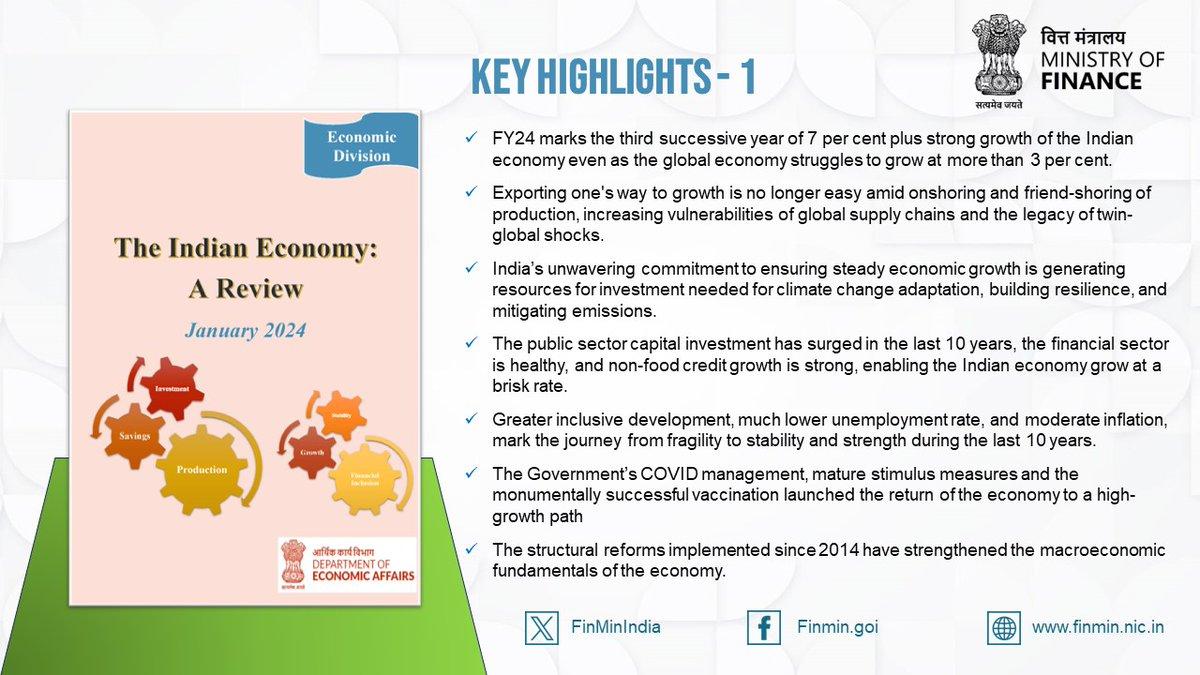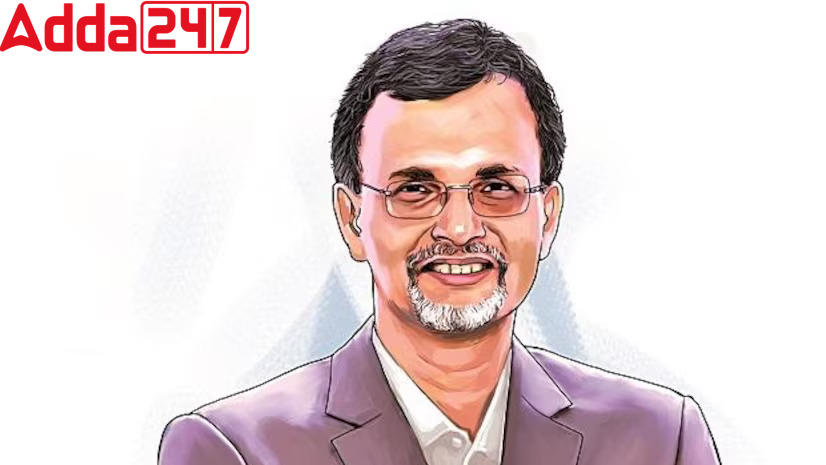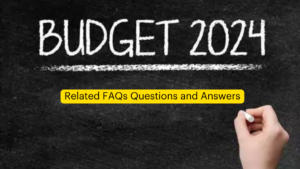What is “The Indian Economy: A Decade in Review” Report
The 74-page document titled “The Indian Economy: A Review” authored by Chief Economic Adviser (CEA) V Anantha Nageswaran and his team presents a comprehensive analysis of India’s economic journey over the past ten years. This report is distinct from the official Economic Survey prepared by the Department of Economic Affairs (DEA) and aims to assess the state of the Indian economy and provide insights into its future outlook.
- The Indian economy is likely to grow at over 7 per cent in the coming years and is expected to become the third-largest economy in the world in the next three years, with a GDP of $5 trillion, driven by domestic demand along with supply-side measures such as investment in infrastructure and measures to boost manufacturing.
- The report said India can aspire to become a $7-trillion economy by 2030.
Key Highlights of “The Indian Economy: A Decade in Review” Report
Preface and Economic Confidence
In the preface, CEA Nageswaran expresses India’s confidence in weathering emerging disturbances, highlighting the country’s transition from fragility to stability and strength. Noteworthy is India’s adept management of crude oil supply, and the CEA pegs the growth rate at or above 7% for FY24, projecting another year of 7% real growth in FY25.
- It now appears very likely that the Indian economy will achieve a growth rate at or above 7% for FY24, and some predict it will achieve another year of 7% real growth in FY25 as well.
- If the prognosis for FY25 turns out to be right, that will mark the fourth year post-pandemic that the Indian economy will have grown at or over 7 per cent. That would be an impressive achievement, testifying to the resilience and potential of the Indian economy.

Challenges and Global Landscape
The report identifies challenges, including concerns over global supply chains, AI’s impact on services trade, and the significant energy transition challenge. It acknowledges the global struggle for recovery post-COVID, emphasizing the importance of addressing these challenges for sustained growth.
Trends and Economic Strategies
CEA Nageswaran outlines three trends India will encounter, signaling the end of hyper-globalization in manufacturing. The government’s commitment to onshoring and friend-shoring production is highlighted, with a focus on addressing infrastructure deficiencies and financial inclusion to meet rising aspirations.
Green Initiatives and Economic Outlook
The preface discusses India’s delicate balance between economic growth and energy transition, commending the nation’s skillful navigation of demands to reduce reliance on fossil fuels. The report underscores India’s progress in non-fossil fuel-based power generation and its commitment to climate change adaptation.
Infrastructure Development
CEA Nageswaran lauds the unprecedented rate of infrastructure development in the last decade. Public sector capital investment has surged, transforming physical and digital infrastructure, including highways, freight corridors, airports, metro rail networks, and trans-sea links.
- The Union government has taken the overall public sector capital investment from Rs 5.6 lakh crore in FY15 to Rs 18.6 lakh crore in FY24.
- That is a rise of 3.3X. Whether the total length of highways, freight corridors, number of airports, metro rail networks or the trans-sea link, the ramp-up of physical and digital infrastructure in the last ten years is real, tangible and transformative.
Financial Sector and Household Health
The report highlights a robust financial sector, emphasizing its willingness to lend. Indian households exhibit good financial health, with Jan Dhan Yojana accounts holding substantial deposits. Household financial assets have risen, and Nageswaran notes the positive trends in non-food credit growth and the reduction of fiscal and current account deficits.
- Fifty-one crore bank accounts under Jan Dhan Yojana now have total deposits of over ₹2.1 lakh crore. Over 55 per cent of them are women.
- In Dec 2019, household financial assets were 86.2 per cent of GDP; liabilities were 33.4 per cent of GDP. In March 2023, these numbers were 103.1 per cent and 37.6 per cent, respectively.
- So, Net Financial Assets of households were 52.8 per cent of GDP in Dec 2019, and by March 2023, it had improved to 65.5 per cent of GDP.
- The report underlined that the government has, over the recent years, helped banks strengthen their balance sheets by recapitalising them and restructuring the industry.
- From the recapitalisation and merger of public sector banks (PSB) and amendment of the SARFAESI Act 2002 to enacting the Insolvency and Bankruptcy Code 2016 (IBC), these reforms have helped clean up the balance sheets of banks and corporates.
- The government and RBI have ensured that the “twin balance sheet problem” of corporates and banks have converted into “twin balance sheet advantage”.
- India is also the third-largest fintech economy in the world, after the USA and the UK.
- India has also overtaken Hong Kong to become the fourth-largest stock market in the world. This has been credited to interest from domestic and global investors and sustained IPO activity.
Employment and Unemployment
Contrary to 2014, the report notes improved economic conditions regarding jobs and unemployment. The economy has created jobs, with a considerable decline in the unemployment rate post-COVID. The labor force participation rate, particularly for women, has increased, and EPF subscriptions among the younger population have risen steadily.
- The female labour force participation rate (LFPR) hiked from 23.3% in 2017-18 to 37% in 2022–23. Through the Skill India Mission, Start-Up India and Stand-Up India, female participation is also growing in human capital formation.
- The female Gross Enrolment Ratio (GER) in higher education has quadrupled from 6.7% in FY01 to 27.9% in FY21. While the GER has more than doubled from 24.5% to 58.2% between FY05 and FY22.
Inflation and Fiscal Indicators
The report highlights the transformation from high fiscal and current account deficits and double-digit inflation in 2014 to controlled inflation, lower fiscal deficit trends, and a current account deficit just above 1% of GDP. Foreign exchange reserves cover nearly eleven months of imports, indicating a strong economic position.



 China, Australia, and India Lead in Fore...
China, Australia, and India Lead in Fore...
 Union Budgets 2024-25 Related FAQs Quest...
Union Budgets 2024-25 Related FAQs Quest...
 Union Budget 2024-25: Complete Budget An...
Union Budget 2024-25: Complete Budget An...
